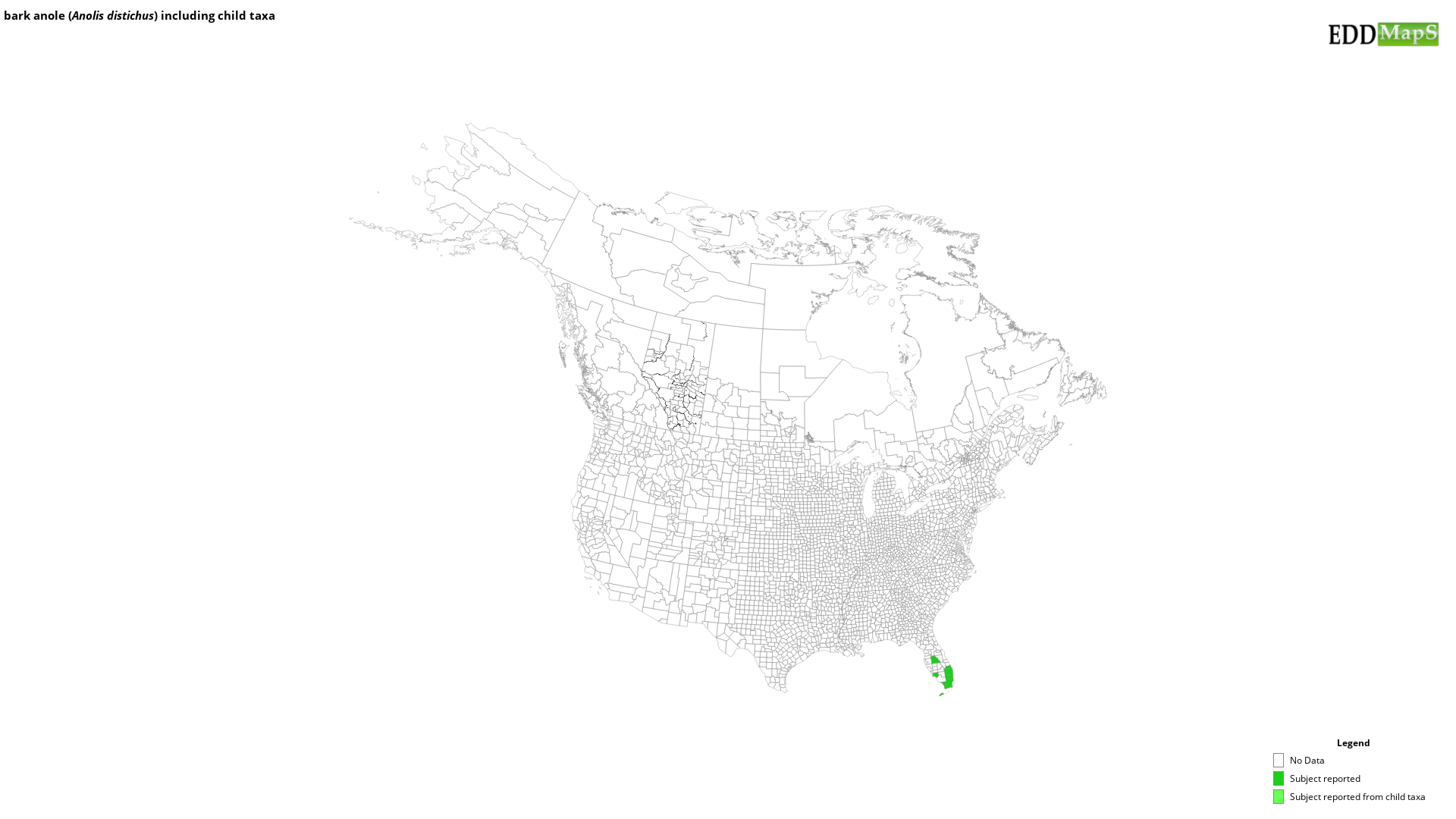bark anole
(Anolis distichus)
This species is Introduced in the United States
Origin
Anolis distichus is native Hispaniola and the Bahamas. Bark anoles were introduced to the United States in Florida.
Life Cycle
A. distichus varies in coloration from gray to brown to green. Females are distinguishable due to lack of dewlap and smaller size. Male dewlaps range in color from yellow to pale white. The primary diet of bark anoles includes small arthropods with heavy emphasis on ants.
Distribution
A. distichus are found in Florida.
Control Efforts
The effects of A. distichus are unknown.
http://www.anoleannals.org/the_species/anolis-distichus/
Anolis distichus is native Hispaniola and the Bahamas. Bark anoles were introduced to the United States in Florida.
Life Cycle
A. distichus varies in coloration from gray to brown to green. Females are distinguishable due to lack of dewlap and smaller size. Male dewlaps range in color from yellow to pale white. The primary diet of bark anoles includes small arthropods with heavy emphasis on ants.
Distribution
A. distichus are found in Florida.
Control Efforts
The effects of A. distichus are unknown.
http://www.anoleannals.org/the_species/anolis-distichus/
Selected Images
Maps
EDDMapS Distribution - This map is incomplete and is based only on current site and county level reports made by experts, herbaria, and literature. For more information, visit www.eddmaps.org
State Lists - This map identifies those states that have this species on their invasive species list or law.
Invasive Listing Sources
Taxonomic Rank
| Domain: Eukarya |
| Kingdom: Animalia |
| Phylum: Chordata |
| Class: Reptilia |
| Order: Squamata |
| Family: Dactyloidae |
| Genus: Anolis |
| Anolis distichus |
References
Common Name Reference: Integrated Taxonomic Information System on-line database.
Scientific Name Reference: Integrated Taxonomic Information System on-line database.


